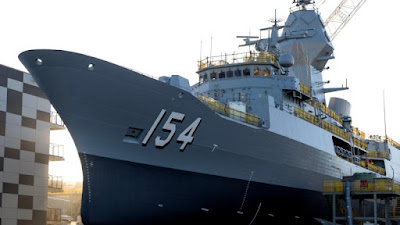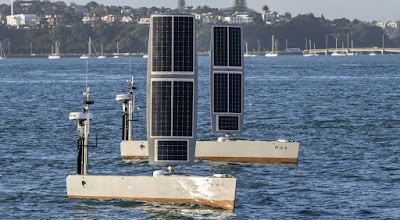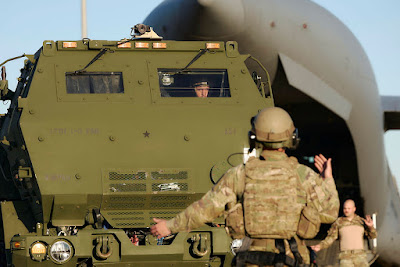Istanbul, Turki – PT Dirgantara Indonesia kembali menguatkan eksistensinya di panggung industri pertahanan global dengan keikutsertaannya dalam ajang International Defence Industry Fair (IDEF) 2025 yang diselenggarakan di Istanbul, Turki. Pada ajang ini, PTDI hadir bersama Holding DEFEND ID sebagai bagian dari strategi ekspansi jangka panjang untuk memperkuat posisi Indonesia dalam rantai pasok industri pertahanan global.
IDEF, yang diakui sebagai salah satu pameran pertahanan terbesar di dunia, menjadi titik temu strategis bagi lebih dari 1.500 perusahaan dari 78 negara. Dalam konteks tersebut, partisipasi PTDI merepresentasikan kemampuan industri pertahanan Indonesia dalam menyediakan solusi kedirgantaraan yang tidak hanya kompetitif secara teknologi, tetapi juga adaptif terhadap kebutuhan dan tantangan kawasan.
Ekspansi Pasar dan Layanan Purna Jual
Saat ini, kawasan Afrika dan Timur Tengah menjadi salah satu sasaran dalam strategi ekspansi pasar PTDI, seiring dengan proyeksi kebutuhan penggantian pesawat turboprop yang diperkirakan mencapai ratusan unit hingga tahun 2030. Produk-produk unggulan seperti pesawat CN235-220 dan NC212i, serta N219 disiapkan untuk menjawab peluang tersebut.
Selain menawarkan platform pesawat, PTDI juga menargetkan sektor layanan Maintenance, Repair & Overhaul (MRO) dengan potensi lebih dari 40 unit pesawat militer dan sipil yang memerlukan dukungan perawatan jangka panjang. Hal ini tentunya membuka ruang pertumbuhan bisnis purna jual bernilai tinggi, sekaligus memperpanjang masa operasional alutsista pengguna di kawasan.
Beragam Penguatan Kemitraan Strategis Indonesia-Turki di Sektor Dirgantara
PTDI memanfaatkan IDEF sebagai wahana diplomasi industri untuk memperkuat sinergi dengan mitra-mitra strategis di Turki. Kolaborasi telah terjalin bersama berbagai pelaku utama industri pertahanan Turki, seperti Turkish Aerospace, Havelsan, Aselsan, dan ELSIS, mencakup kerja sama produksi dan rekayasa pesawat, kolaborasi untuk produksi UAV Anka, program pengembangan simulator, program pesawat AEW&C, pembangunan rantai pasok global untuk komponen dan aerostructure, serta kerja sama lainnya.
Pada ajang IDEF 2025 ini, PTDI juga menyepakati sejumlah perjanjian kerja sama dengan partner strategis, yaitu Havelsan, khususnya dalam program pesawat Maritime Patrol Aircraft (MPA) dan Maritime Surveillance Aircraft (MSA), termasuk pekerjaan modernisasi, perakitan dan manufaktur untuk calon pelanggan, baik untuk end user di Indonesia, Turki, maupun dari potensial negara lainnya. Kesepakatan ini tidak hanya memperkuat posisi PTDI di pasar global, tetapi juga berkontribusi langsung terhadap peningkatan kapabilitas manufaktur dan rekayasa PTDI sebagai industri pertahanan nasional yang adaptif dan kolaboratif.
Di samping itu, PTDI dan Havelsan juga menekankan kembali kolaborasi dalam pengembangan simulator pesawat CN235-220, yang berpotensi meningkatkan kompetensi nasional dalam teknologi simulasi dan pelatihan, sekaligus membuka peluang kebutuhan simulator di pasar global. Dukungan Havelsan sebagai pemain utama dalam teknologi simulasi dan sistem pertahanan akan menjadi katalis penting bagi peningkatan daya saing PTDI. Kerja sama PTDI dan Havelsan juga nantinya akan dikembangkan untuk program pesawat AEW&C (Airborne Early Warning & Control) untuk kebutuhan di kedua negara baik Indonesia maupun Turki.
PTDI juga menyadari pentingnya mempertahankan dan meningkatkan kesiapan operasional (operational readiness) dan lifecycle support pesawat CN235. Dalam rangka itu, pada ajang IDEF 2025, PTDI jalin kesepakatan kerja sama dengan Aselsan untuk mengeksplorasi potensi kolaborasi dalam program keberlanjutan (sustainability program) pesawat CN235 yang sedang berjalan di PTDI. Kolaborasi ini mencakup berbagai aspek strategis, antara lain dukungan sistem, peluang peningkatan kapabilitas, logistic solutions, hingga kerja sama teknis, yang diharapkan dapat memperkuat keandalan dan umur operasional pesawat CN235 di masa mendatang.
Adapun IDEF 2025 ini juga menjadi momentum baik bagi PTDI untuk memanfaatkan peluang pengembangan dan produksi bersama jet tempur dengan Turkish Aerospace. Keterlibatan PTDI nantinya diharapkan mencakup partisipasi dalam program transfer teknologi utama, yang memposisikan Indonesia untuk mendapatkan manfaat dari kemampuan jet tempur canggih, avionik generasi terdepan dan fitur desain yang mutakhir. Hal ini ditandai dengan penandatanganan kerja sama dalam kerangka Framework Agreement untuk keterlibatan industri nasional dalam pengembangan dan produksi komponen strategis jet tempur dari Turkish Aerospace. Kolaborasi ini juga akan membuka jalan bagi PTDI untuk memperkuat kapabilitas engineering dan manufaktur di sektor pesawat jet tempur, sekaligus meningkatkan nilai tambah industri dalam negeri dalam rantai pasok global.
Berbagai upaya penguatan kemitraan strategis ini mencerminkan peningkatan hubungan bilateral Indonesia-Turki dalam bidang industri pertahanan yang saling melengkapi. Indonesia memiliki kemampuan rekayasa dan manufaktur pesawat angkut, sedangkan Turki unggul dalam pengembangan sistem dan sensor canggih. Kedua negara sama-sama menempatkan kemandirian pertahanan sebagai prioritas nasional, sehingga kolaborasi ini menguatkan posisi keduanya di pasar global sekaligus menciptakan nilai tambah yang saling menguntungkan.
PTDI juga telah mencatatkan rekam jejak penting dalam kerja sama sebelumnya, yaitu keberhasilan modifikasi 6 unit pesawat CN235 menjadi Anti-Submarine Warfare (ASW) milik Turkish Navy dan 3 unit pesawat CN235 menjadi Naval Surveillance Aircraft (NSA) milik Turkish Coast Guard pada periode 2003 s/d 2015 – sebuah rekam jejak penting yang memperkuat posisi PTDI sebagai Original Equipment Manufacturer (OEM) sekaligus mitra strategis dalam penyediaan solusi pesawat udara berkemampuan khusus. Keberhasilan program-program tersebut mencerminkan kompetensi teknis dan kualitas hasil pekerjaan PTDI dalam memenuhi standar operasional tinggi dari Lembaga pertahanan dan keamanan Turki.
Penanda-tanganan kerjasama PT DI dengan ELSIS (photo: Elsis)
Peneguhan Peran Global Industri Pertahanan Indonesia
“Melalui keikutsertaan kami di IDEF 2025, PTDI memperkuat peran aktifnya dalam membangun kemitraan strategis yang saling menguntungkan dan berorientasi pada penguatan industri pertahanan nasional. Kolaborasi dengan berbagai mitra di Turki, termasuk Havelsan, Aselsan dan Turkish Aerospace, kami pandang sebagai langkah maju untuk meningkatkan kapabilitas teknologi dan daya saing industri kedirgantaraan Indonesia secara berkelanjutan di pasar global,” jelas Gita Amperiawan, Direktur Utama PTDI.
Keikutsertaan dalam ajang seperti IDEF menjadi bagian dari diplomasi ekonomi strategis Indonesia untuk memperkuat pengaruhnya dalam sektor industri pertahanan dunia. Bagi PTDI, pameran ini menjadi platform untuk membangun kepercayaan, baik dari pengguna lama maupun mitra baru di kawasan yang memiliki kebutuhan akan solusi kedirgantaraan yang tangguh dan efisien.
Lebih dari bisnis, partisipasi PTDI juga mencerminkan kontribusi nyata Indonesia dalam mendorong arsitektur keamanan kolektif dan penguatan industri pertahanan di negara-negara mitra strategis. Posisi geografis Turki yang menghubungkan Asia, Eropa dan Timur Tengah menjadikannya simpul strategis bagi ekspansi PTDI ke negara-negara pengguna pesawat turboprop yang membutuhkan penggantian armada. Kesiapan PTDI untuk menjadi mitra strategis dan manufaktur global merupakan cerminan kapasitas bangsa dalam bersaing di pasar industri pertahanan yang berorientasi pada inovasi, efisiensi dan kebelanjutan.






%20menandatangani%20perjanjian%20strategis%20untuk%20memp.jpg)










































